Compliance this, compliance that. In the cycling world, we hear the word compliance quite frequently. Handlebars, in particular, are one of the components where the word gets thrown around a lot, with various brands claiming different levels of compliance and associated benefits to using their products. But what does that really mean and what impact does it have on performance in the real world? And, since there’s no standardized handlebar compliance test or rating scale, how do we actually know how different models compare in terms of stiffness/compliance?
To learn more, we teamed up with Faction Bike Studio for mountain bike handlebar compliance testing. After testing the compliance of 42 handlebar models in Faction’s lab, we cherry-picked a small selection as a representative sample of the varying levels of compliance across the spectrum for blind rider testing to see how their differences translate on the trail. Check out the video above and keep reading for a little background on this project, what we learned, and Faction Bike Studio. And, if you’re looking for a new handlebar, we’ve rounded up our favorites in our guide to the best mountain bike handlebars.
What is Compliance?
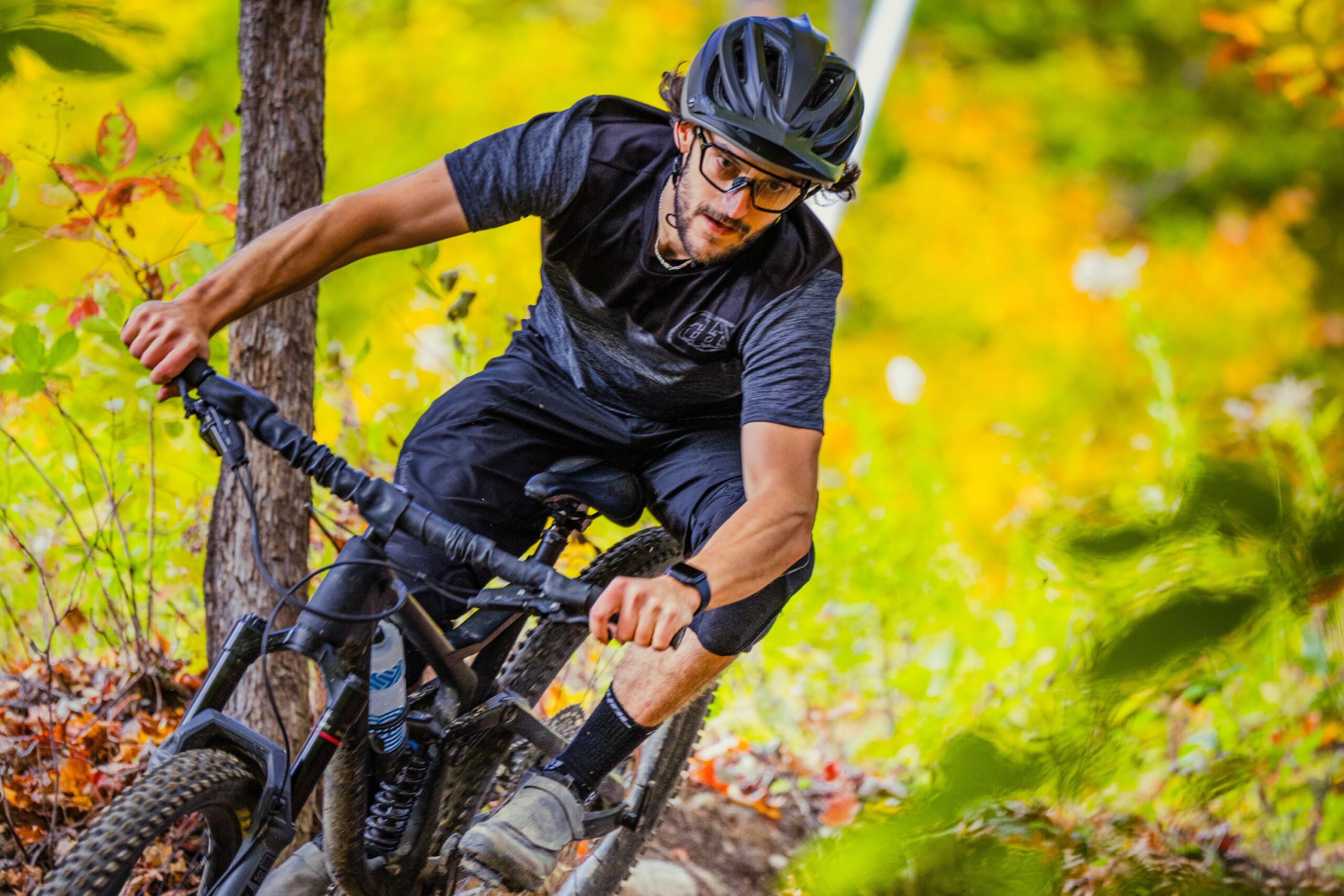
The word compliance is defined by the Merriam-Webster dictionary as: “the ability of an object to yield elastically when a force is applied.” While it means slightly different things depending on the context when we’re using it in relation to physics, it essentially is the property of a material or object deforming or flexing under load. Basically, it’s the opposite of stiffness.
In recent years, compliance has become a popular buzzword in the bike industry that is typically used to describe products that are intended or claimed to provide a certain level of forgiveness with the goal of enhancing comfort or control. Brands use this word to describe everything from bike frames, saddle rails, and wheels, to seemingly straightforward components like handlebars.
While there are lots of riders out there who don’t think twice about their handlebar, there are plenty of folks who realize that there are significant differences and performance characteristics among the many brands, models, materials, and shapes of bars. Preferences vary, of course, with many riders preferring something stiff for super-precise handling and maximum control, others preferring something more compliant to take the edge off vibration and impact, and plenty of people aiming for the happy middle ground between the two extremes.
While compliance can undoubtedly play a major role in enhancing comfort by absorbing some impact and vibration, there are also other factors to consider when it comes to handlebars. Changes in geometry (rise, upsweep, and backsweep) and even the setup of your controls can affect your body position and wrist alignment. Choosing the right grips can also be a factor in getting the right fit for your hands or adding some cushioning and vibration absorption. Furthermore, proper suspension setup, the right tire pressure, or more compliant wheels can also help to reduce vibration and feedback that can otherwise be transmitted to your upper body.
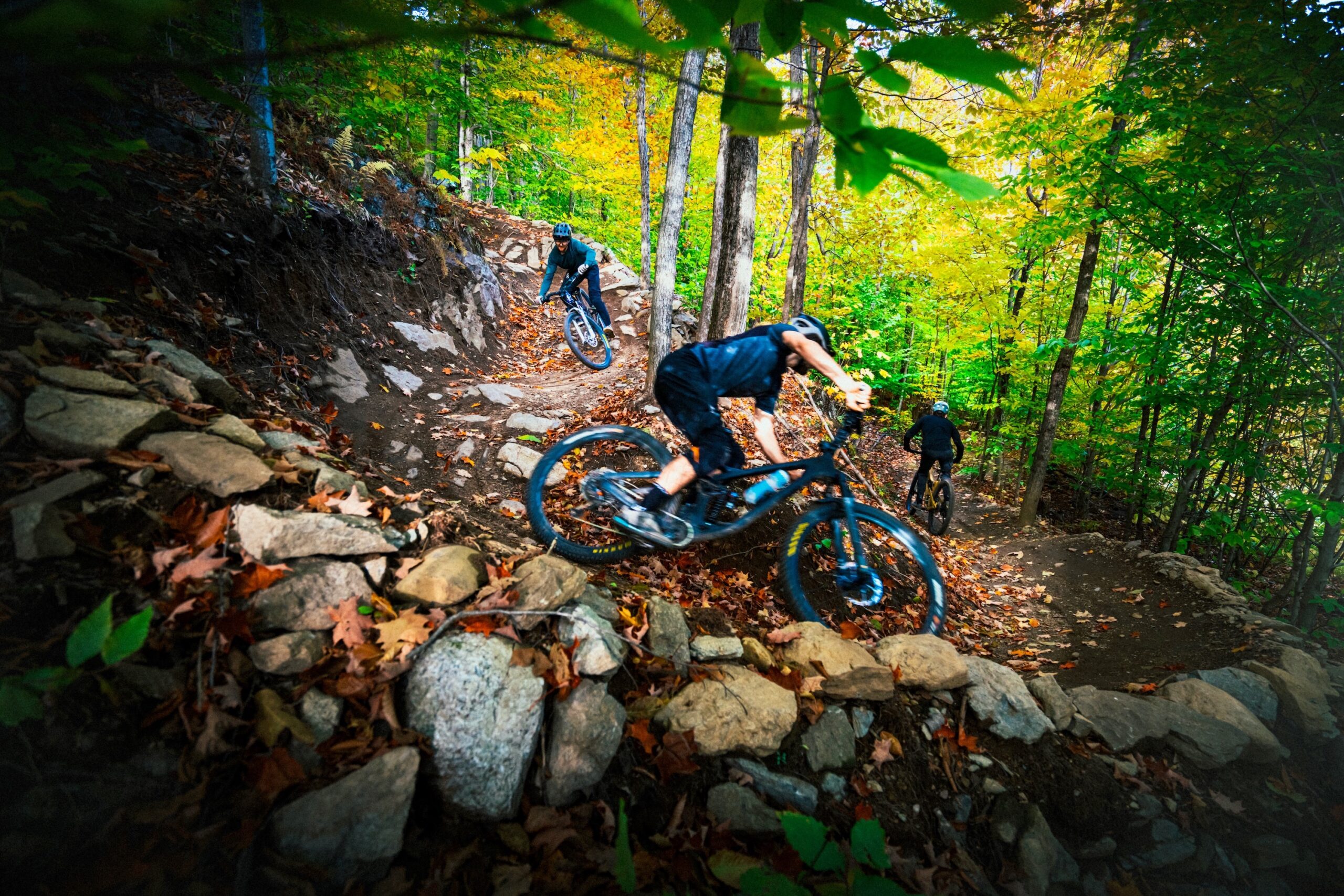
Project Background
We’ve been in contact with Faction Bike Studio for the past couple of years, slowly but surely coming up with a plan to collaborate on a project together. After quite a bit of back and forth, a plan finally started to take shape in March of 2023. It was actually former Bikerumor team member, Jessie-May Morgan, who kicked off the handlebar compliance testing project at that time.
The premise was fairly simple. Gather a wide selection of handlebars and perform a standardized, consistent, repeatable flex test on all of them in Faction’s test lab to determine their deflection, or level of compliance, in a controlled environment. Armed with that information, the next step was to do some blind rider testing to see if those differences were noticeable and how those lab test findings translate to use on the trail.

Lab Testing
I wasn’t present for the lab testing, but Simon Ayotte, Faction Bike Studio’s R+D Director who performed the lab testing, gave me the step-by-step rundown.
-Place the handlebar in the table clamp with the rise aligned vertically.
-Tighten screws to 5N.m.
-Put the weight clamp 65mm from the end of the handlebar. (adjust for bar length for consistency)
-Put the weight (42kg or 92.6 lbs) on the hook of the clamp. Note deflection.
From Simon: “We measured to make sure that the deflection was linear (like a coil spring), so it didn’t really matter the weight we chose, but we ended up with 42kg because that’s what we had lying around and it made for enough deflection to make measurements easy. One thing that is important to note, is that we adapted where we put the load depending on the bar length, so all measurements are comparable. Our baseline was 800mm bar width, where we put the load 65mm from the ends. So, for example, if we have an 820mm bar, we adjust the measure to 75mm, if the bar is 760mm wide we adjust the measure to 45mm. This way all deflections measured are “adjusted” for a standardized 800mm width.”
This simple test provided a comparison of the compliance of each bar given the same amount of weight applied. The amount of deflection (flex) was recorded and a stiffness rating, which is essentially a spring rate, was given to each handlebar. Spring rate is the constant amount of force it takes a compression spring to travel an inch of distance, (or if using the metric system, a millimeter of distance). Since the metric numbers are quite small, we chose to express this in lbs/in so that the differences are more readily apparent.
For comparison, the most compliant bar we tested, the Roost Titanium (31.8mm clamp, 20mm rise) has a spring rate of 237 lbs/in (4.24 kg/mm), whereas the stiffest bar we tested, the Nukeproof Horizon V2 Carbon (35mm clamp, 12mm rise) has a spring rate of 515 lbs/in (9.19 kg/mm). Meaning that it takes more than double the force for the Nukeproof bar to flex the same amount as the Roost.
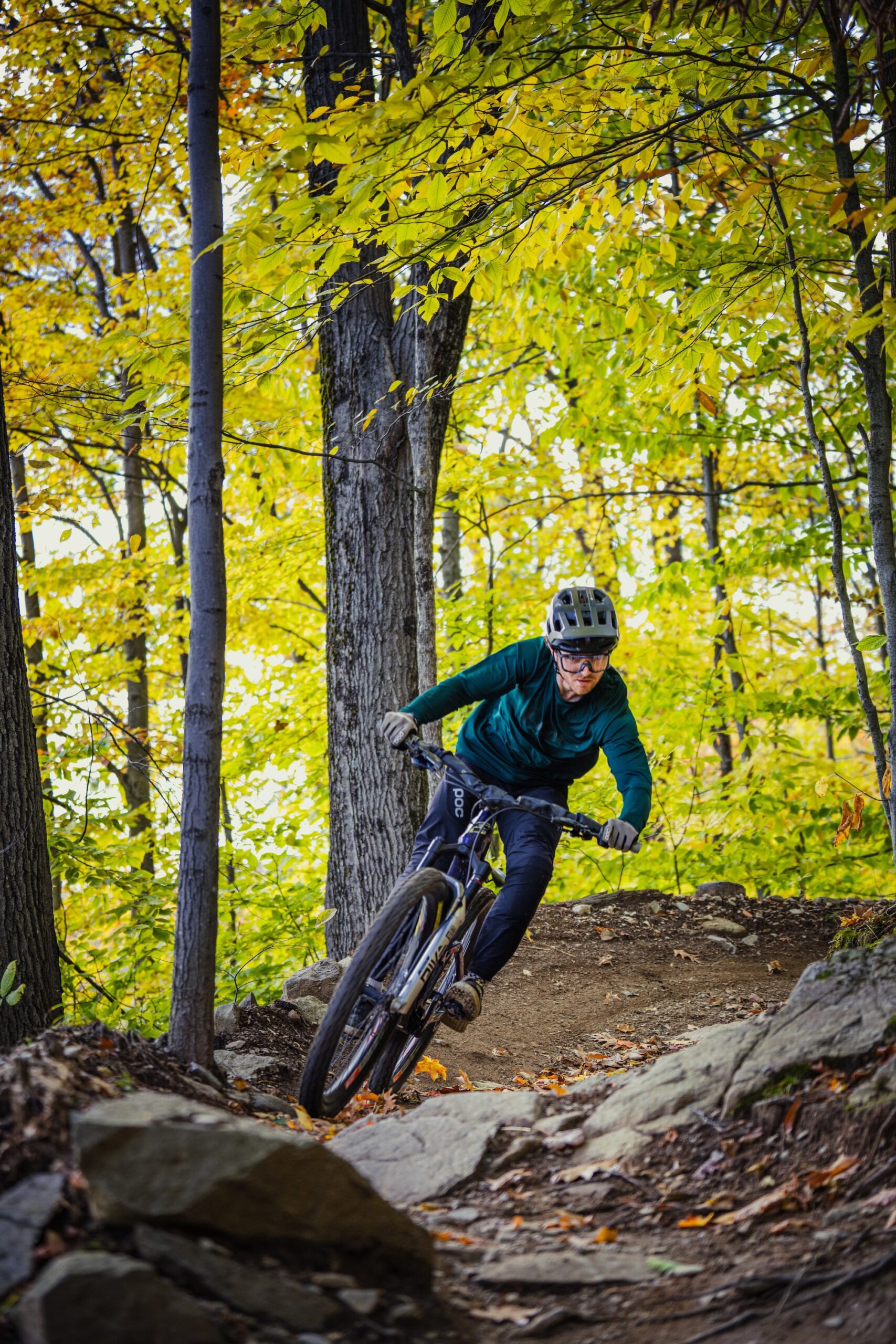
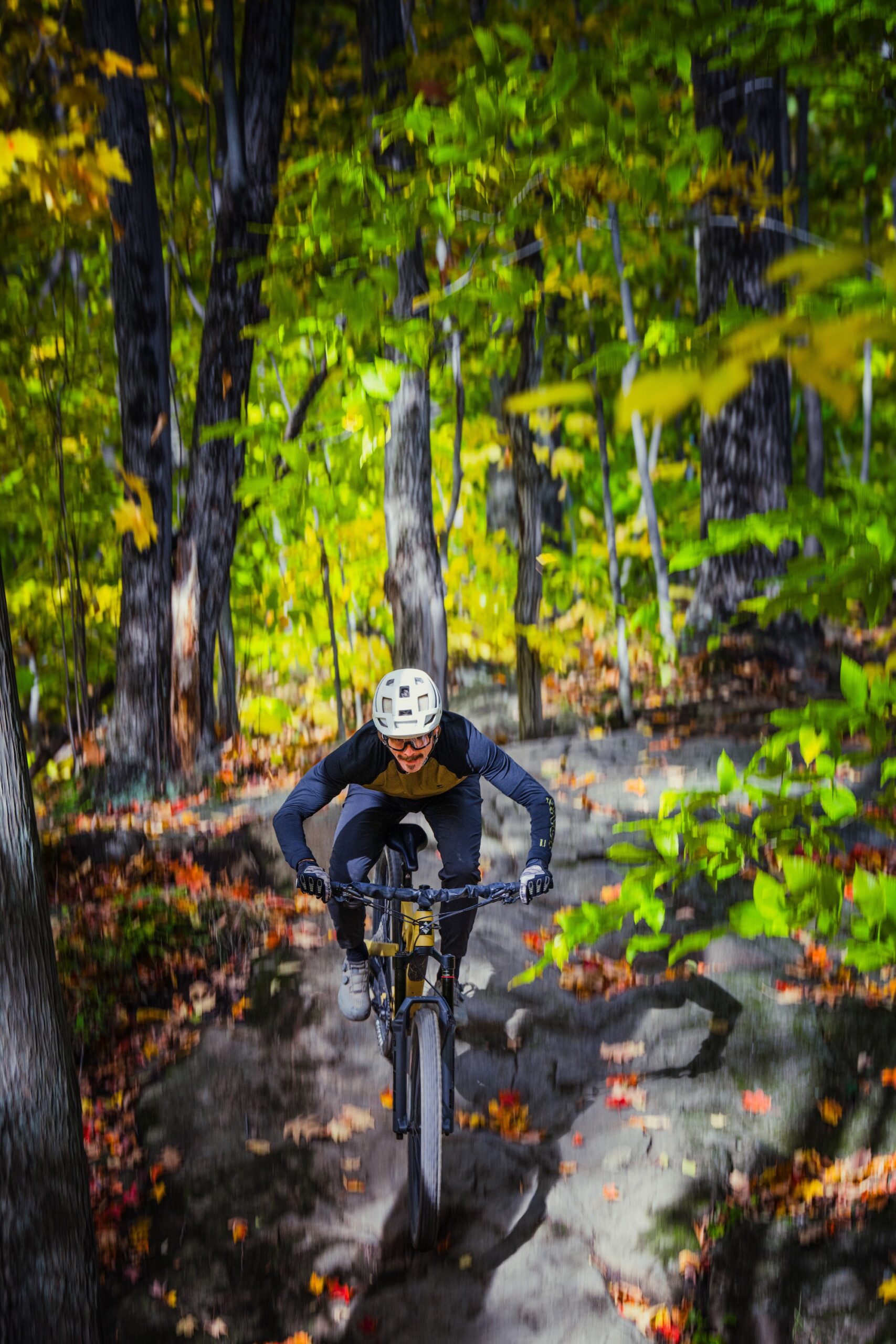
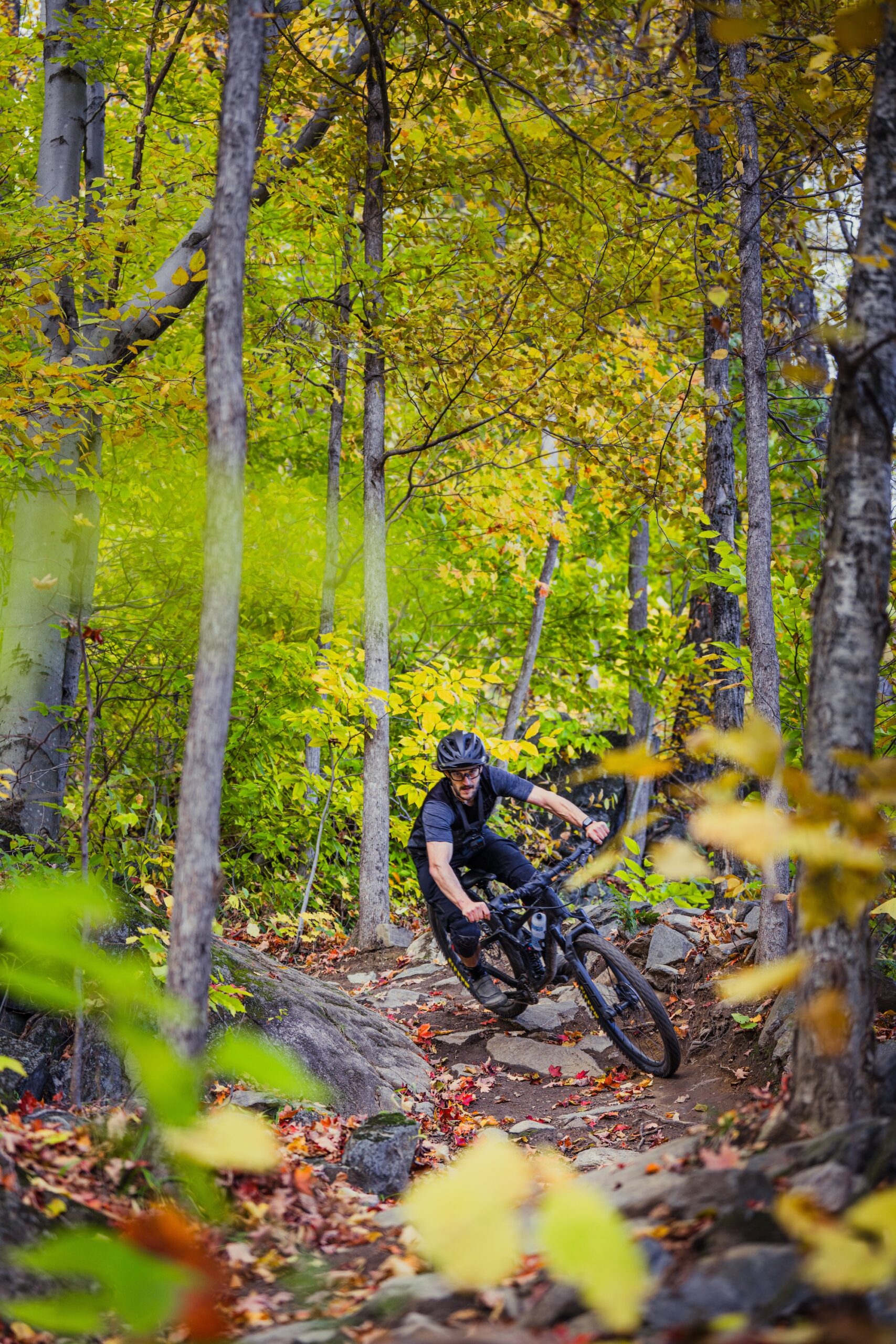
Rider Testing
The second aspect of our testing was to perform blind rider testing to see if the differences in handlebar compliance were noticeable, and what, if any, impact it had on our comfort and control while riding. To do this, a selection of four handlebars were chosen from the test group including the stiffest, most compliant, and two that fell slightly above and below the average to represent the range of compliance. We assigned compliance ratings (0-10) based on where they fell on the compliance scale from the lab testing.
Back in October, I met Faction Bike Studio’s product manager, Adam Robbins, along with the R&D Director, Simon Ayotte, for a day of handlebar testing at Bromont, QC. I’d like to point out that both Adam and Simon absolutely rip on mountain bikes and it was fun trying, and failing, to keep up with them while we were testing. Faction Bike Studio’s design office and test lab is located nearby in Granby, QC, and Bromont is the closest and best riding in the area and arguably all of southern Quebec. (It’s definitely some of the best riding I’ve done on the East Coast, and I grew up there!)
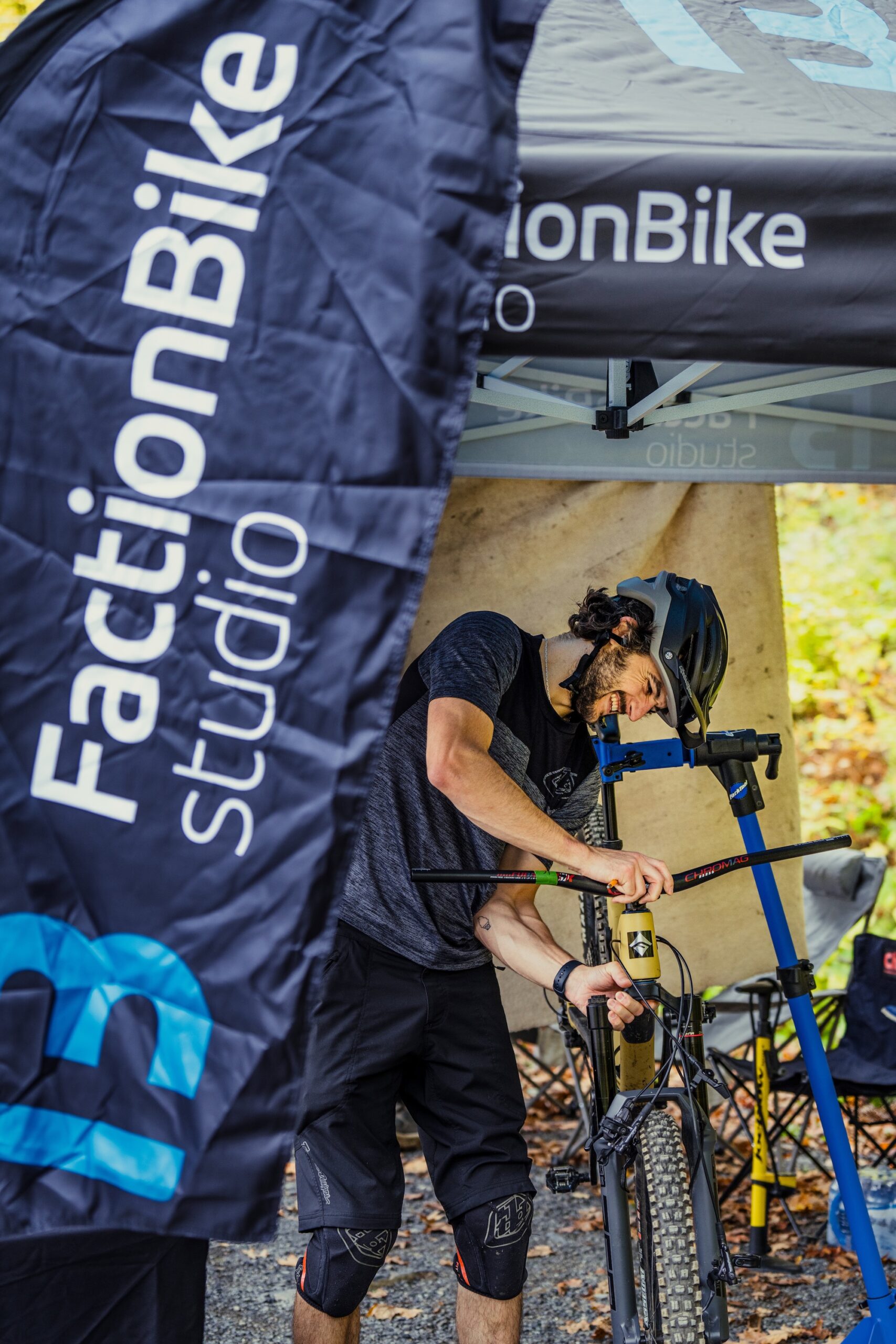


Bromont boasts an incredible number and variety of trails, from machine-built flow to technical hand-built East Coast chunk. Several chairlifts operate all summer for access to the bike park, and there are designated climbing routes for those accessing the trails under their own power or riding e-MTBs. There’s something for everyone, from beginners to seasoned pros. In fact, Bromont has even hosted numerous World Cup Downhill races over the years.
Unfortunately, our late October timing meant that the lifts had closed for the season the week before our testing, so we ended up climbing for each of our handlebar test laps. On the flip side, we also happened to be riding during the absolute peak of the fall foliage, so none of us really seemed to mind the extra effort it took to pedal to the top.

Simon, Adam, and I all rode a control lap with our regular handlebars, to familiarize ourselves with the trail and have a baseline to compare to the other bars. Since Simon knew the results of the lab testing, he played the role of bike mechanic, swapping them out after each run and making sure to cover them so that Adam and I were unaware of the brand, model, material, and clamp diameter. A simple but effective section of a bicycle inner tube was used to obscure the handlebar and stem from our view. Simon also took great care to ensure that our bar height, roll, and the setup of our controls were consistent every time.
Riding the different bars back to back provides the opportunity to directly compare the way they feel on the trail. Adam had chosen an excellent test lap for us that featured everything from sweeping berms, steep rock slabs, chunky technical sections, and plenty of speed. This test lap provided us the opportunity to use each handlebar on the exact same track to assess their performance in the same compressions, chatter, and handling scenarios. He also showed up early on the day of testing and walked the whole trail with a battery-powered leaf blower to clear it of all the recently fallen leaves. Thanks Adam!
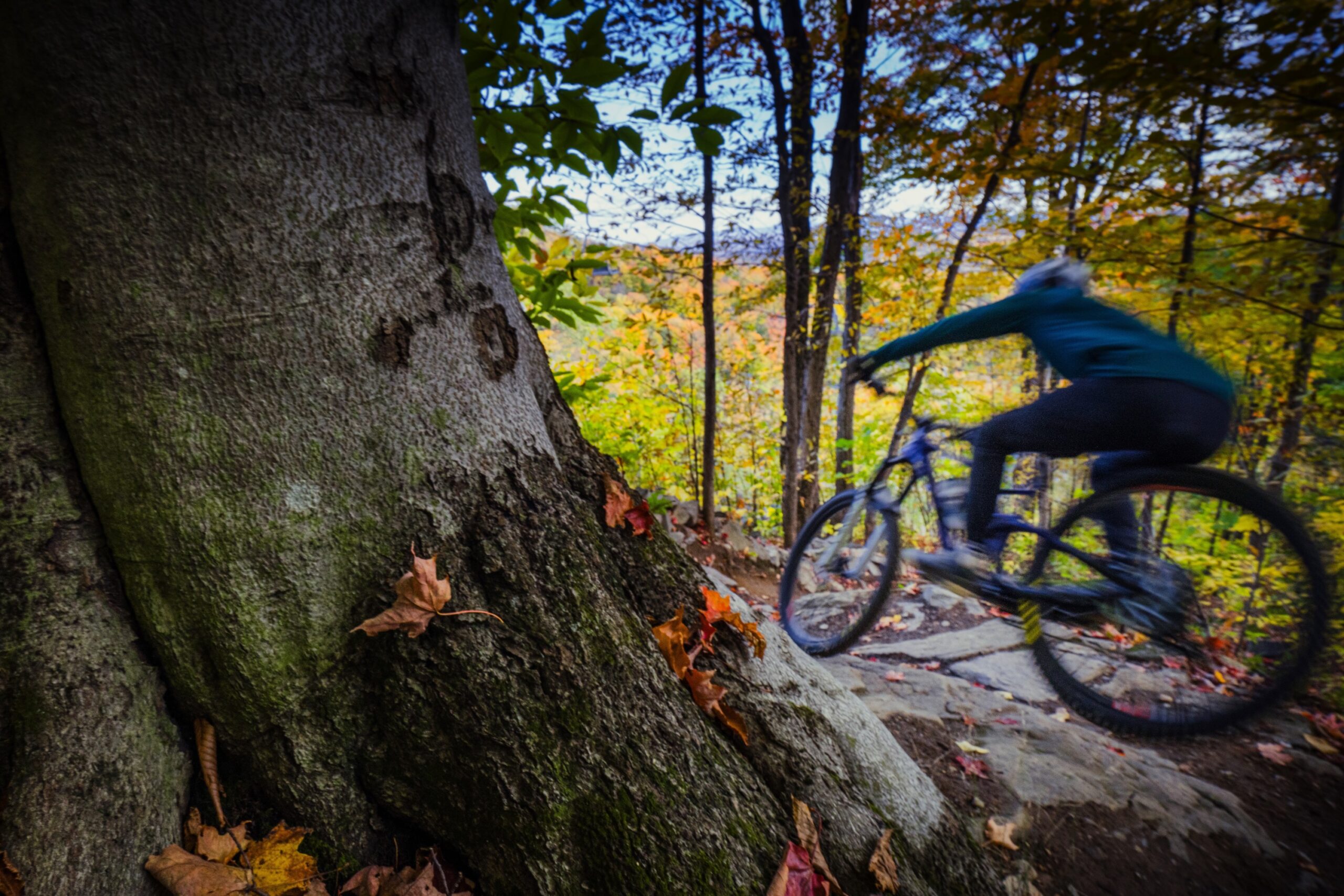
What We Learned
For everyone involved, I think there are quite a few takeaways from this project. First and foremost, there are relatively significant differences in compliance across the bars we tested. Those differences are, in fact, quite noticeable out on the trail, particularly when riding bars at the extremes of the stiffness/compliance scale back to back. The closer you get to the median, of course, the less obvious those differences become. And, while a bar may feel too compliant or too stiff initially, it doesn’t take too long to get used to it even if it isn’t necessarily ideal.
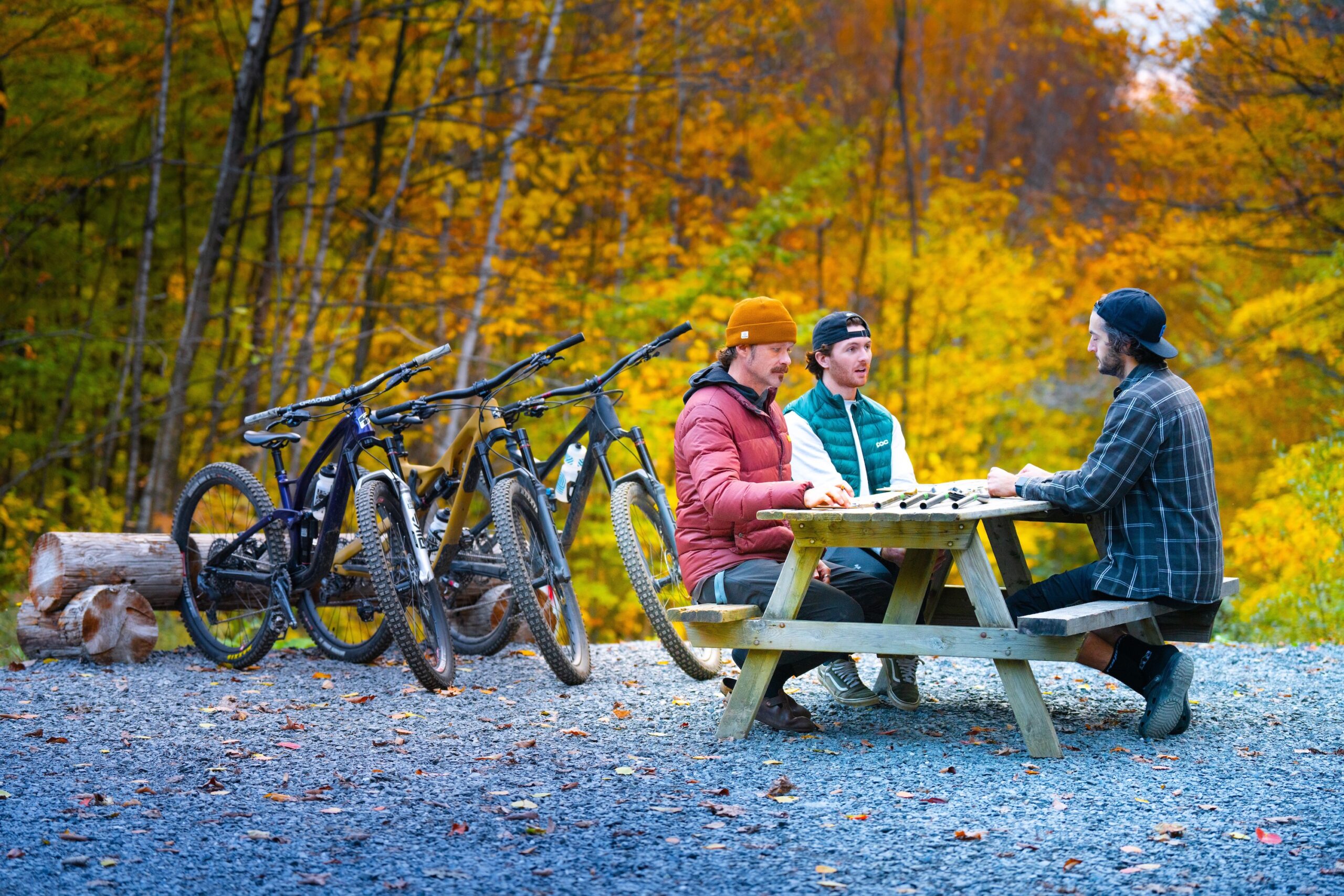
General Trends
The results of our lab testing revealed some general trends regarding the stiffness/compliance of handlebars made from different materials and with different clamp diameters. By simply calculating the averages of all the models we tested (separated by material and clamp diameter), we found that handlebars made from carbon fiber are slightly stiffer than those made of aluminum and that bars with a 35mm clamp diameter are slightly stiffer than those with a 31.8mm clamp diameter.
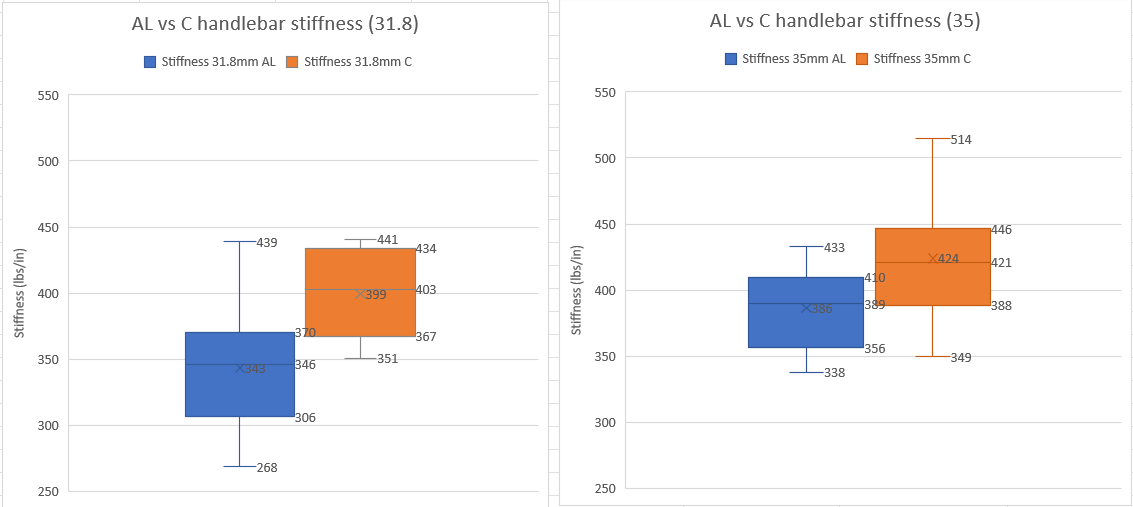
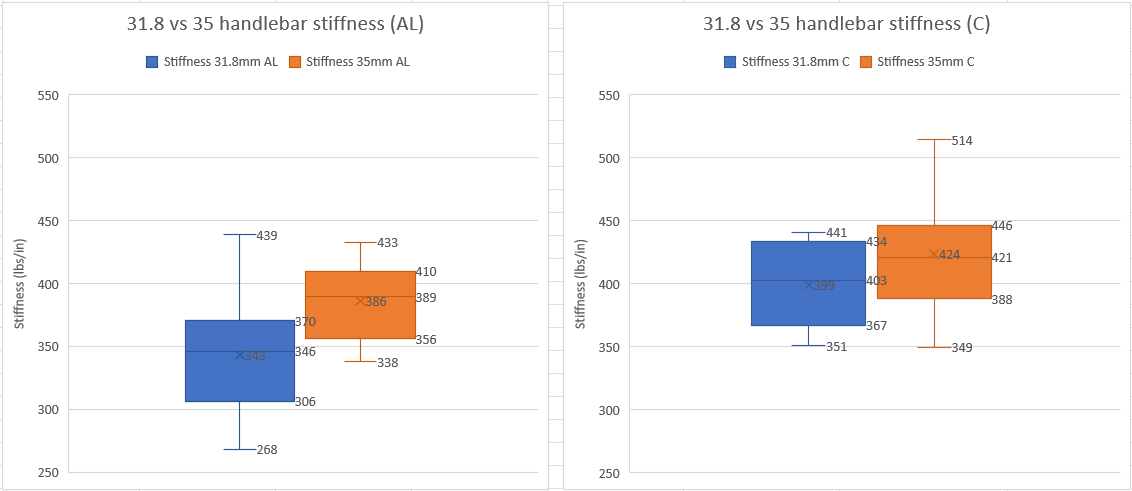
Of course, those are very broad brush strokes and the trends are just considering the averages. Within each category of clamp size and material, you will find bars that are stiffer or more compliant (not counting the Titanium models). In fact, the sixth stiffest bar we tested was the Chromag OSX Alloy 31.8mm R25, and the ninth stiffest was the Chromag OSX Alloy 35mm R25. That said, the other eight of the ten stiffest bars were carbon fiber, 6 of which had a 35mm clamp diameter, 4 of those were Nukeproof Horizon V2 Carbon, and three of them were FSA Gradient Carbon models.
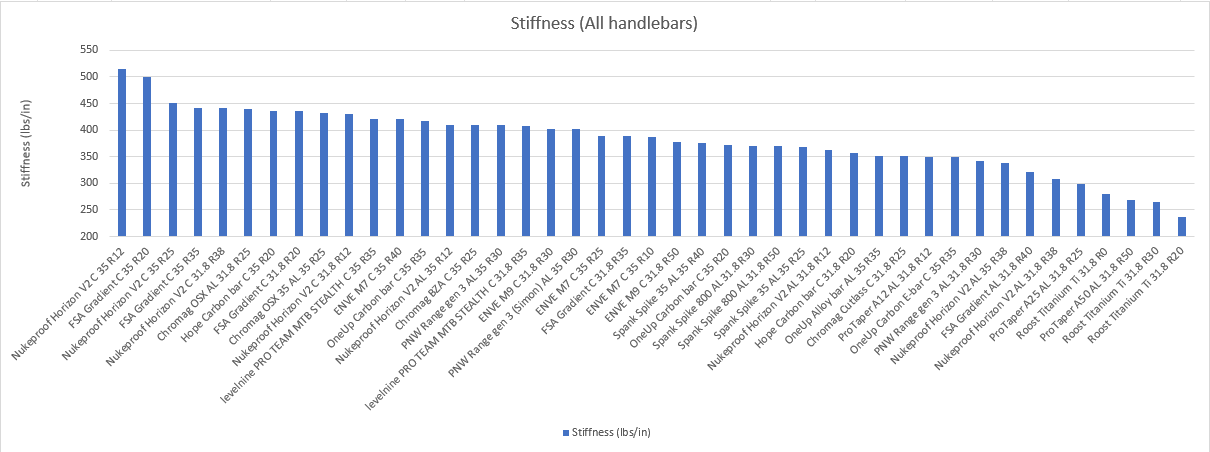
On average, handlebars made from Titanium (at least the three Roost models we tested) are significantly more compliant than those made from other materials by approximately 30%. The two most compliant bars we tested were the Roost Titanium R20 and R30, and the R0 was fourth. This makes sense given Titanium’s reputation as a frame-building material for providing a more forgiving ride quality, but even then, I didn’t expect them to be that compliant despite that being one of Roost’s primary selling points.
Variability
We also found that there is quite a bit of variance among the same model of handlebar in different clamp sizes, materials, and rise measurements. This stands to reason given that adding bends, changing the size of the clamp interface, or using a different material will likely have some measurable impact on its ability to flex under weight. But, what that tells us is that you shouldn’t automatically expect the same handlebar to feel exactly the same across different materials, clamp sizes, or rise dimensions. The exception to this rule is the four Spank Spike Alloy models we tested, which were nearly identical regardless of rise or clamp diameter.
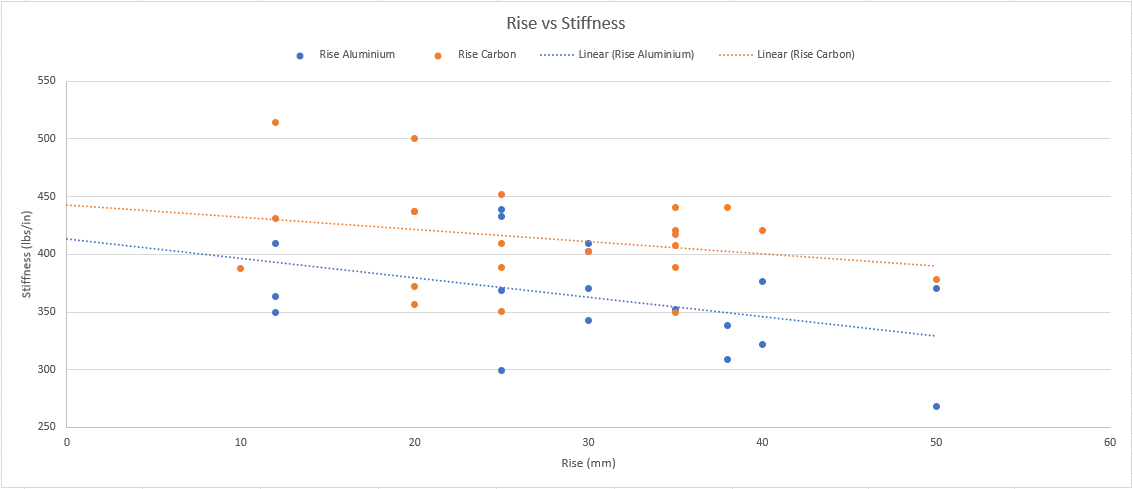
It is also worth mentioning that we only tested one sample of each handlebar model in the lab, so our findings don’t take manufacturing variability into account. As an example, the FSA Gradient Carbon (35mm clamp, 20mm rise) we tested in the lab was the 2nd stiffest bar (500 lbs/in), and the same model as Adam’s personal bar. Later lab testing of Adam’s personal bar revealed that it actually measured the same as the Chromag OSX (31.8mm clamp, 25mm rise) we rode in the video (438 lbs/in). Other than the potential for some stiffness of carbon components to be lost over time due to fatigue (though we can’t confirm the rate or level to which this happens), we feel this is more likely the result of manufacturing variability.
Materials
Compliance alone isn’t the only factor dictating how forgiving a handlebar feels. It does play a major role in absorbing some of the brunt of larger impacts like those typically associated with riding mountain bikes, of course, but different materials absorb high-frequency vibration to varying degrees. It is here that carbon fiber bars have the upper hand, and personal experience has shown that some carbon handlebars provide a more damp or muted feel when compared to aluminum options with the same level of compliance.
Faction Bike Studio’s R&D Director, Simon Ayotte, provided a little explanation. “The many tiny interfaces in a composite bar damp out vibrational energy much better than a metal part (whether bar, frame, fork or seatpost). It has been clearly shown in testing performed in the past at the Universite de Sherbrooke. This is the reason that most aluminum bikes are sold with carbon forks – forks and bars are areas where vibrations are readily transferred to the rider and so composite parts in these areas provide very noticeable benefits in ride feel and quality. It should also be noted that the vibration-damping effect comes from the composite structure and not specifically carbon fibres. The comfort effects talked about are based more on the high-frequency effects of road riding.”
So, while this project showed that the findings of the lab-based compliance testing did translate directly to how different handlebars feel on the trail, we also recognize that there are further tests that can be done specific to mountain bike handlebars and different materials’ ability to absorb high-frequency vibration.

Fit
A handlebar’s shape and, more specifically, its ergonomics, play an equal or potentially greater role in rider comfort. Even the slightest changes to rise, sweep angles, width, and handlebar roll can alter your body position and wrist alignment in ways that can positively or negatively impact both your comfort and performance on the bike. There is no one-shape-fits-all, so it’s important to find what works best for your specific anatomy.

What’s Best?
There is no right or wrong, better or worse. Of course, a certain level of stiffness or compliance may be better or worse for you depending on your preferences, but that’s the beauty of having so many options. You can choose what works best for you whether that’s a supremely stiff Nukeproof Horizon V2 Carbon, a significantly more compliant Roost Titanium bar, or one of the many options that land somewhere in between.
As for me, I’m sticking with my OneUp Carbon handlebar because it works well for me. It lands roughly in the middle of the compliance scale of all the models we tested and I feel it delivers an exceptionally balanced ride feel. It’s not nearly as compliant in the flex test as the Roost Titanium bars, but I personally feel like it manages to mute high-frequency buzz and feedback as well or better than anything else I’ve tried. Whether that has something to do with the ovalized rise section or carbon’s ability to absorb vibration differently, I’m not entirely sure. Maybe it’s just my perception or the placebo effect? Regardless, it’s lightweight, looks good, and I just like it.
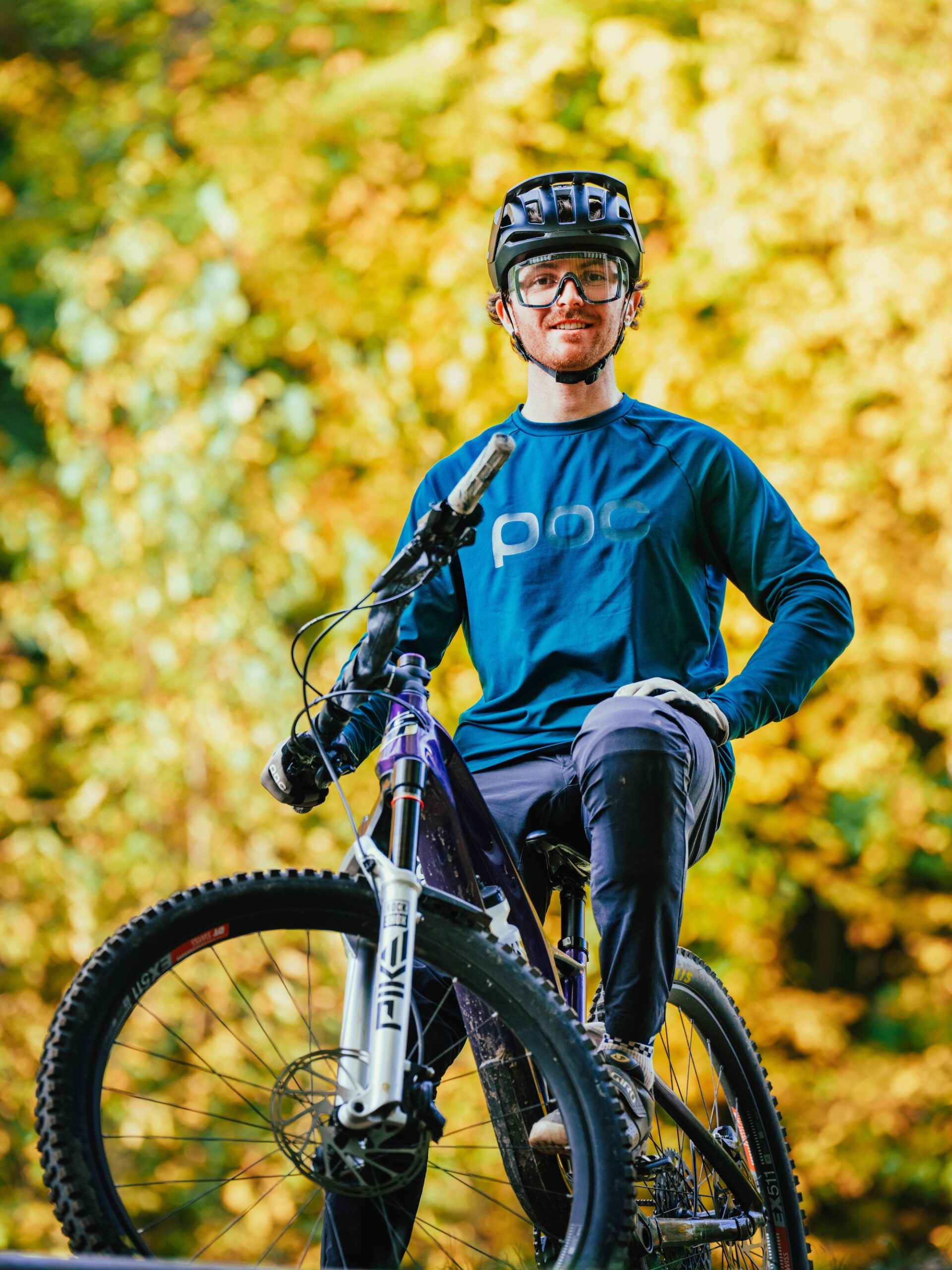

About Faction Bike Studio
Faction Bike Studio was founded in 2010 and is located in Granby, Quebec, about an hour east of Montreal. Faction is an independent design, engineering, and testing company that works with many brands across all aspects of the cycling industry from road, gravel, and mountain bikes to components, accessories, electric bikes, and micromobility projects.
Faction Bike Studio offers a wide range of services including strategy, design, product development (including prototyping and lab and field testing), industrialization/production, and even brand strategy and marketing. Faction has a full-time staff of 33 designers, engineers, testers, and more who work with brands to take products from concept to reality.
Faction operates primarily behind the scenes and provides services from ideation to production for many brands in the cycling industry. As such, their work is everywhere, including UCI and Enduro World Cups, and the Olympics, even though it may not be apparent to the casual observer, and their work has earned them numerous design and engineering awards over the years.

One of the more visible projects that Faction has worked on that many people may be familiar with is Neko Mullaly’s Frameworks bikes. Recent posts on Instagram have shown this partnership and Faction Bike Studio’s role in the engineering support and prototyping of the most recent bonded Frameworks test bikes.
To learn more about Faction Bike Studio and the services they offer, visit factionbikestudio.com